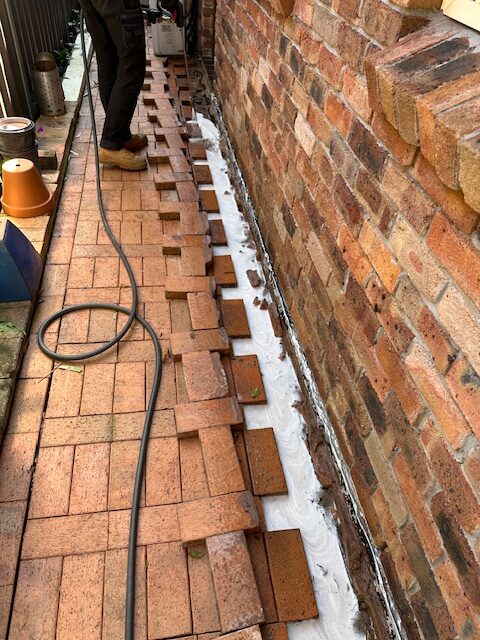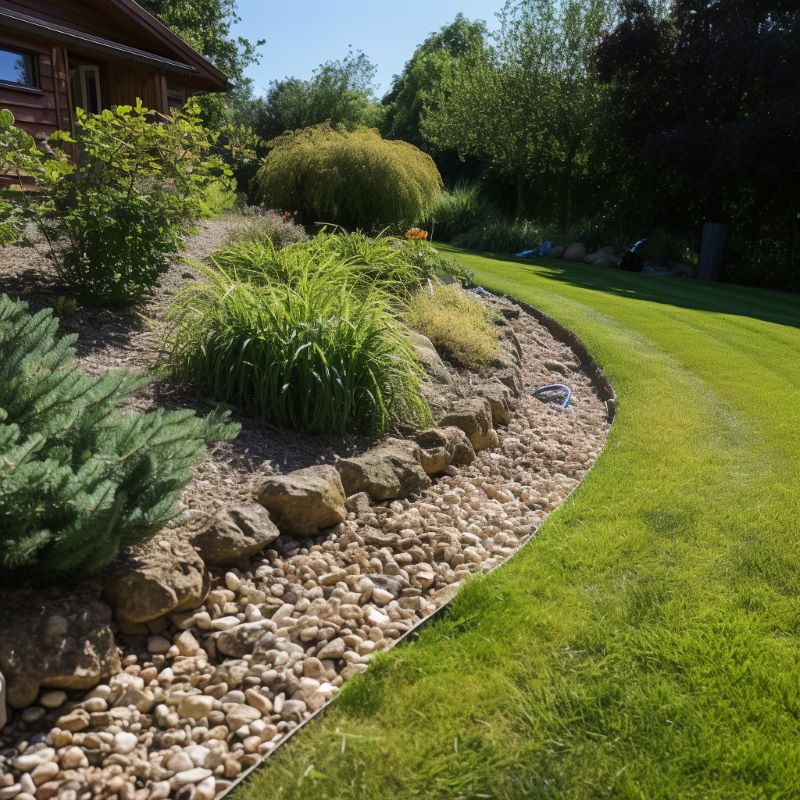Landscaping plays a crucial role in enhancing not only the aesthetic appeal of your home but also its overall market value. However, if landscaping is executed without meticulous planning and consideration, it may inadvertently undermine the integrity of your termite barriers. These essential protective systems are vital for safeguarding your property against harmful termite infestations. Unfortunately, some landscaping practices and maintenance routines can disrupt these barriers, reducing their effectiveness. This comprehensive guide is designed to provide you with the essential knowledge needed to make landscaping choices that protect against termites while ensuring the durability of your protective barriers.
Discover the Vital Importance of Termite Barriers for Protecting Your Home
Termite barriers are specialized systems, either physical or chemical, meticulously designed to be installed around or beneath your home to prevent termites from infiltrating your living space. It is imperative that every residence has a reliable termite management system in place, and understanding the specific type of barrier installed at your property is crucial for effective protection. One of the simplest methods to verify this information is by inspecting your electrical meter box, where relevant details about your termite protection can typically be found. These barriers are essential for safeguarding structures, particularly in regions such as Sydney’s Hills District, where termite activity is notably high and poses a significant threat to homeowners.
- Physical Barriers: These barriers are typically constructed from robust materials like stainless steel mesh or graded stones, installed beneath a building to effectively obstruct termites from tunneling through.
- Chemical Barriers: These consist of liquid termiticides applied to the soil surrounding a structure, thus creating a treated zone that deters or eliminates termites from entering.

Recognize Landscaping Practices That Could Undermine Your Termite Barriers
Many commonly practiced landscaping techniques can inadvertently damage or weaken the efficacy of your termite barriers, potentially exposing your home to serious infestations. Being aware of these practices empowers you to make informed decisions that protect your property from pest threats.
1. Planting Near Your Home’s Foundation
When plants, shrubs, or trees are positioned too close to your house, they can create a range of complications that threaten your termite defenses:
- Roots may infiltrate physical barriers or disturb the treated soil within chemical barriers, ultimately reducing their protective capabilities and allowing termites easier access.
- Dense vegetation can trap excess moisture around the foundation, a significant attractant for termites, thereby increasing the risk of a potential infestation.
2. Adding Soil or Mulch Near the Foundation
Introducing additional soil or mulch close to your property’s foundation can inadvertently create a bridge over chemical barriers, allowing termites to bypass the protective measures put in place. Organic mulch, in particular, can serve as both a food source and habitat for termites, making it an attractive option for these pests, thereby increasing your risk of an infestation.
3. Hardscaping and Paving Projects
The installation of paving stones, patios, or retaining walls in close proximity to your property can disrupt existing termite barriers. The movement of soil during these construction projects might compromise the chemical seal or create gaps in physical barriers, leading to vulnerabilities that termites could potentially exploit.
4. Considerations for Irrigation Systems
Poorly designed irrigation systems or excessive watering can saturate the soil surrounding your home’s foundation. This not only dilutes the effectiveness of any termiticides in chemical barriers but also creates a conducive environment for termite colonies to thrive and proliferate.

Implement Landscaping Strategies to Protect Your Termite Barriers
1. Maintain Sufficient Clearance from Your Home
- It is highly advisable to maintain a distance of at least 50 cm between plants and trees and your home’s foundation, which helps ensure an effective barrier against termite access and minimizes risk.
- Consider selecting smaller, non-invasive plant species that are less likely to develop extensive root systems capable of interfering with your termite barriers and causing potential damage.
2. Select Termite-Resistant Mulch Choices
- Opt for inorganic mulches such as gravel or stone, or consider using termite-resistant materials like cedar or cypress to effectively minimize risks associated with termite attraction.
- Limit mulch piles to a maximum height of 5 cm, ensuring they are maintained at least 15 cm away from the foundation to effectively reduce moisture retention and deter termites.
3. Avoid Disturbing Barriers During Landscaping Activities
- Before digging or installing landscaping features near your home, consult with a professional to avoid disturbing the integrity of the termite barriers or any termite baiting systems that may be in place.
- In the event of soil alterations, it is advisable to have the barrier reinspected and potentially retreated to ensure continued protection against termite invasion and other pests.
4. Thoughtful Landscape Design Considerations
- Position irrigation systems strategically away from the foundation to prevent excessive moisture accumulation that could compromise the integrity of the barrier.
- Install root barriers for larger trees to prevent roots from encroaching on the termite barrier, thus avoiding potential damage.
- Be cautious of termite reticulation pipes to avoid damaging them during landscaping activities, which could jeopardize your property’s defenses against termite invasions.
Immediate Actions to Take if Your Termite Barrier Has Been Compromised
If landscaping activities or natural incidents have disturbed your termite barrier, prompt action is essential to prevent potential infestations from occurring:
- Schedule a Professional Inspection: A thorough termite inspection will help identify any vulnerabilities and confirm whether termites have breached your protective barrier, allowing for timely intervention.
- Reinforce Your Barrier: Depending on the findings, physical barriers may require repairs, while chemical barriers might need retreatment or a top-up to restore their effectiveness against termites and other pests.
- Implement Regular Monitoring: Routine inspections for termite activity are crucial to ensure that your barrier remains intact and your property continues to be protected from potential infestations.
Innovative Landscaping Solutions That Boost Your Termite Protection
With thoughtful planning and strategic design, your landscaping can effectively complement your termite protection efforts and enhance the overall safety of your home:
- Incorporate gravel paths or decorative stones along the foundation to create a dry zone that effectively deters termites from approaching your property.
- Utilize raised garden beds with adequate clearance from the house to minimize moisture retention near the foundation, thereby reducing the risk of termite attraction.
- Regularly trim vegetation to ensure proper ventilation and reduce moisture buildup, creating an inhospitable environment that is less favorable for termites.

Landscaping can be thoughtfully designed to enhance, rather than undermine, your termite barriers. By gaining a comprehensive understanding of how various yard designs impact termite protection, you can create a visually appealing and pest-free home environment. For expert termite advice or assistance with maintaining your barriers, reach out to our experienced team today. Together, let’s work to secure your home while you create the landscape of your dreams.
The Article: Termite Barriers for Effective Landscaping Solutions first appeared on https://writebuff.com.




I really appreciate your take on the interplay between landscaping and termite barriers. It’s such a critical point that often gets overlooked! I’ve seen friends invest in beautiful gardens or elaborate outdoor spaces only to find out later that their landscaping choices, like planting too close to the foundation, could compromise the integrity of their termite barriers. It feels like a double-edged sword—wanting to create a welcoming outdoor area while also safeguarding against potential infestations.
The struggle between crafting a lush, inviting garden and keeping those pesky termites at bay is a classic homeownership conundrum. It’s like trying to make a beautiful cake while keeping the frosting from sliding off—just when you think you’ve got it perfect, here come the termites, eager to ruin your day, or worse, your house.
You’ve really captured the essence of that dilemma between aesthetics and practicality. It’s true that creating a beautiful outdoor space can sometimes inadvertently set the stage for potential problems, like the ones you mentioned regarding termite barriers.
You raise a great point about the fine line between creating a stunning outdoor space and dealing with practical issues like termite barriers. It’s interesting how the very elements that make a garden or patio visually appealing can sometimes invite challenges we don’t immediately consider.
You’ve hit on a key issue that really deserves more spotlight than it typically gets. It’s surprising how often people dive into landscaping without fully thinking through its impact on the home’s structural defenses, especially when it comes to termites. The lure of having a lush garden is strong, but sometimes the thrill of creating that perfect outdoor space can overshadow practical considerations.